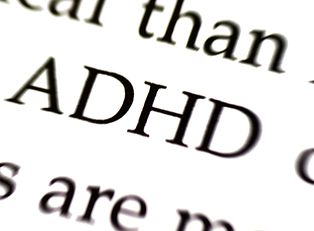ADHD is a comprehensive disorder that leads to different behaviors among children and adults including hyperactivity, difficulty holding attention, as well as impulsive actions. While it originally stood for attention deficit hyperactivity disorder, many doctors have chosen to redefine it slightly because it is more than just attention deficit and hyperactivity.
There is no complete cure for ADHD. However, ADHD symptoms can be greatly reduced by carrying out different treatments based upon the different signs and symptoms that a person is exhibiting.
Most people are diagnosed with ADHD as early as two or three years or age and it continues into adulthood. While most people are able to focus on the disorder better as they get older, it can be a struggle throughout an entire life. Many of the symptoms worsen when there is additional mental effort required to complete a task.
Understanding ADHD Symptoms
There are a significant number of ADHD signs, and they should be discussed with a doctor. The signs and symptoms expressed by individuals depends upon the specific type of ADHD they have:
-
People who suffer from the Primarily Inattentive Type, more commonly known as ADD, typically express symptoms relating to difficulty focusing or finishing tasks. They have difficulty paying attention and are inattentive, as the type name suggests. Children are sometimes aloof and may not be involved in activities. Though boys are more commonly diagnosed with ADHD overall, the Primarily Inattentive Type is the most common expression of ADHD for girls
-
People who suffer from the Hyperactive-Impulsive Type express symptoms relating to hyperactivity as indicated by the name. This could include such things as constant fidgeting and an inability to sit still. People are also impatient or may interrupt others. Though inattentiveness is less of a concern with this specific type, individual may still mildly exhibit some of those symptoms as well.
-
People who suffer from the Combined Type express strong symptoms from both Inattentive and Hyperactive-Impulsive types. Most children diagnosed with ADHD are diagnosed with this type. Specific symptoms could include children who exhibit greater than normal levels of energy combined with inability to focus and impulsive behaviors.
Inattention is often characterized by actions such as failing to pay close attention in schoolwork, problems organizing, and getting distracted. Hyperactivity includes talking excessively, fidgeting, and leaving one's seat in a classroom or other situations when sitting is expected. Impulsive behavior surfaces in the blurting out questions, standing up in class or generally being disruptive.
Some people show more ADHD signs than others. Most of the time, boys are diagnosed before girls because girls are more likely to daydream instead of fidget so it's easier to identify the signs. Speaking to a doctor is highly suggested if the signs continue for more than six months or are causing problems, either in relationships or at school.
Looking at ADHD Causes
There are a number of different ADHD causes, though there is still a significant amount of research being done to see if there are any other issues. Some of the top causes include altered brain function and anatomy, which can be as a result of maternal smoking, drug use, or even exposure to toxins. Children who are also exposed to these types of toxins also have a greater chance of being diagnosed with ADHD.
Studies have also shown that ADHD causes are hereditary and several genes may actually be associated with it. It is also believed that food additives can lead to ADHD symptoms. This includes certain artificial colorings and preservatives.



